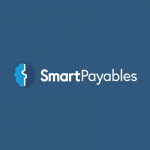Businesses are continuously seeking effective ways to protect themselves against fraud, just as fraud continues to evolve in turn. Check fraud is a significant issue, with businesses losing billions annually. According to the Association for Financial Professionals (AFP), 80% of organizations experienced actual or attempted check fraud in 2023. One such method that has proven to be highly effective against fraud is the positive pay system. Here, we delve into what a positive pay system is, how it works, and the various benefits it offers to businesses.
What is a Positive Pay System?
A positive pay system is a fraud detection tool used by banks to prevent check fraud. Positive pay systems are highly effective in reducing check fraud. Organizations using positive pay report significantly lower instances of fraud. A survey by the AFP found that positive pay is one of the most effective fraud prevention tools.
Positive pay involves the bank matching checks presented for payment against a list of checks previously authorized and issued by the company. If discrepancies are found, the bank flags the check for review, potentially preventing the processing of fraudulent transactions.
How Does a Positive Pay System Work?
1. Issuing Checks
When a business issues checks, it sends a list of the details of these checks to its bank. This list typically includes:
- Check number
- Issue date
- Payee name
- Check amount
This information is often submitted through a secure electronic file to ensure accuracy and confidentiality.
2. Presenting Checks for Payment
When a check is presented to the bank for payment, the bank compares its details against the list provided by the business. This comparison includes checking the check number, date, payee, and amount.
3. Verifying Checks
If all the details match, the check is processed for payment as usual. However, if there are discrepancies — such as the check number not being on the list or the amount being different — the check is flagged for further review.
4. Handling Exceptions
When a check is flagged as an exception, the bank notifies the business. The business must then review the flagged check and decide whether to approve or reject the payment. This step helps to prevent unauthorized or fraudulent checks from being cashed.
5. Automated and Manual Processes
While many aspects of positive pay systems are automated, some processes, like handling exceptions, require manual intervention. This combination ensures that checks are thoroughly verified while allowing human oversight in suspicious cases.
Types of Positive Pay Systems
Traditional Positive Pay
Traditional positive pay involves the business sending a list of issued checks to the bank, which then verifies each check presented for payment. This system primarily focuses on paper checks.
Reverse Positive Pay
In reverse positive pay, the bank sends a list of checks presented for payment to the business. The business then verifies the checks against its records and informs the bank which checks should be paid. This method gives businesses more control over the verification process.
Payee Positive Pay
Payee positive pay is an enhanced version that includes the verification of the payee’s name. This adds an extra layer of security, ensuring that even if a check number and amount match, the check can still be flagged if the payee’s name does not match the records.
Benefits of Positive Pay Systems
Fraud Prevention
The primary benefit of a positive pay system is fraud prevention. Businesses can significantly reduce the risk of check fraud by ensuring that only authorized checks are paid.
Increased Accuracy
Positive pay systems help increase the accuracy of financial transactions. By matching each check against a list of issued checks, businesses can avoid errors that may occur with manual check processing.
Improved Security
These systems enhance the security of financial transactions by adding multiple layers of verification. This reduces the likelihood of unauthorized checks being cashed and helps protect sensitive financial information.
Enhanced Control
Positive pay systems give businesses greater control over their financial transactions. By reviewing exceptions and making final payment decisions, businesses can ensure that only legitimate checks are processed.
Time and Cost Savings
While implementing a positive pay system may involve some initial costs, it can lead to significant time and cost savings in the long run. Automated check verification reduces the need for manual check processing, freeing up resources for other important tasks.
Implementation Considerations
Choosing a Provider
When selecting a positive pay system provider, businesses should consider factors such as the provider’s reputation, the features offered, and the level of customer support. It’s also important to choose a provider that can integrate seamlessly with the business’s existing accounting and banking systems.
Training and Support
Proper training and support are essential for the successful implementation of a positive pay system. Businesses should ensure that their staff are well-trained in using the system and that they have access to ongoing support to address any issues that may arise.
Cost
While positive pay systems offer significant benefits, businesses should consider the costs. This includes the initial setup costs and any ongoing fees for using the system. However, the cost of implementing a positive pay system is often outweighed by the savings from preventing fraud and reducing manual processing.
Strengthening Financial Security with Positive Pay Systems
In conclusion, a positive pay system is a powerful tool for businesses looking to enhance their financial security and prevent check fraud. By verifying each check against a list of issued checks, businesses can ensure that only authorized checks are processed, increasing accuracy and control over financial transactions. While there are costs involved in implementing a positive pay system, the benefits — such as fraud prevention, improved security, and time savings — make it a worthwhile investment for many businesses.
For businesses interested in adopting a positive pay system, partnering with a reliable service provider like SmartPayables can streamline the implementation process and provide ongoing support to ensure the system operates effectively. SmartPayables offers comprehensive check printing solutions that help businesses protect themselves against fraud and enhance the efficiency of their financial operations. Contact our expert team today to discover how SmartPayables can support your business.
Founded in 2005, Smart Payables offers a full range of accounts payable payment solutions including outsourced check printing and mailing, document and statement printing and mailing, ACH direct deposits + more. Our highly experienced software developers and intelligent printing teams specialize in secure, enterprise-grade payment options that are HIPAA, SOC 1 Type 2, and ISO compliant. Our mission is to help businesses and large organizations implement secure, innovative technology that will reduce overhead and improve business operations and capabilities.


